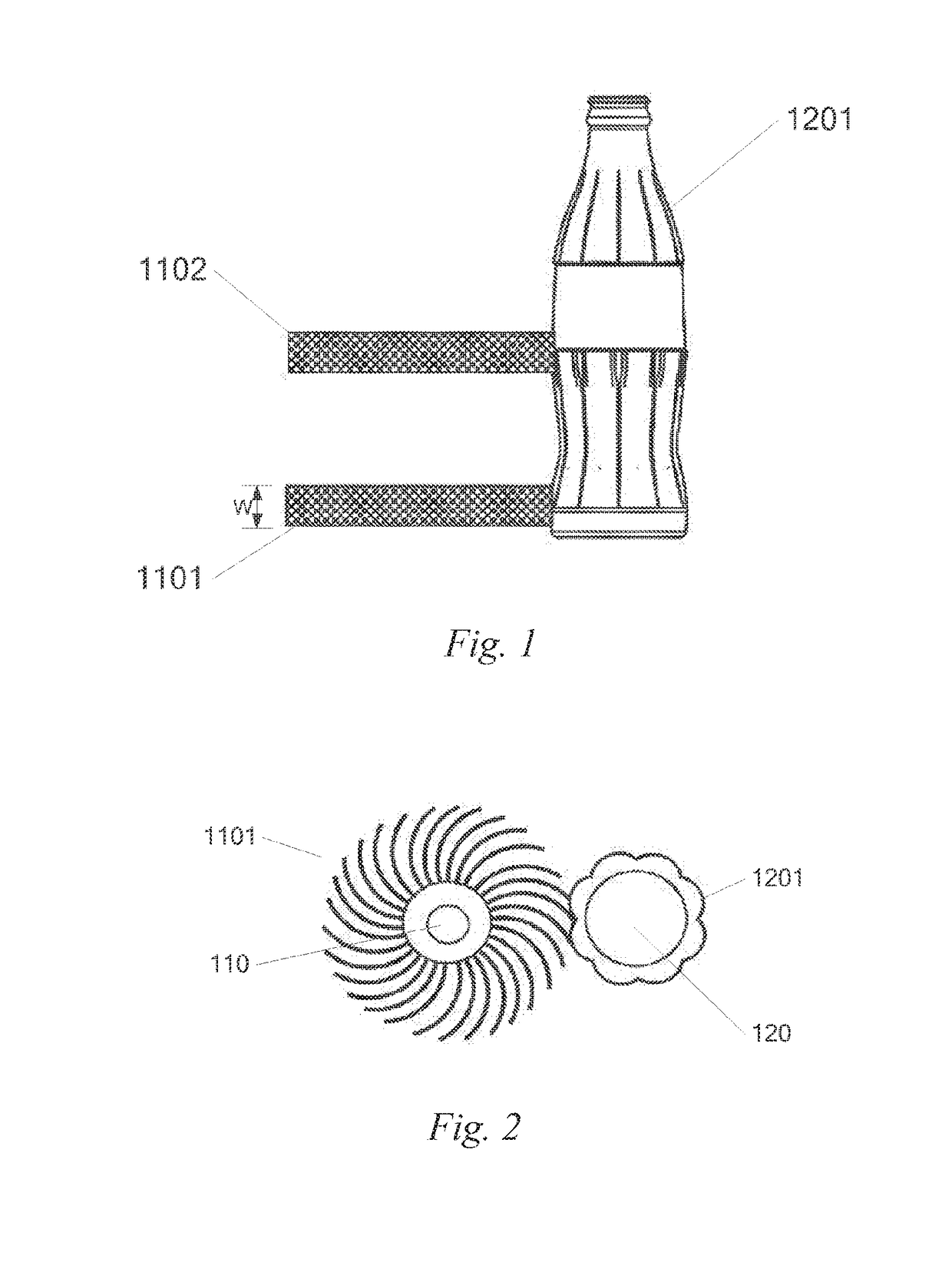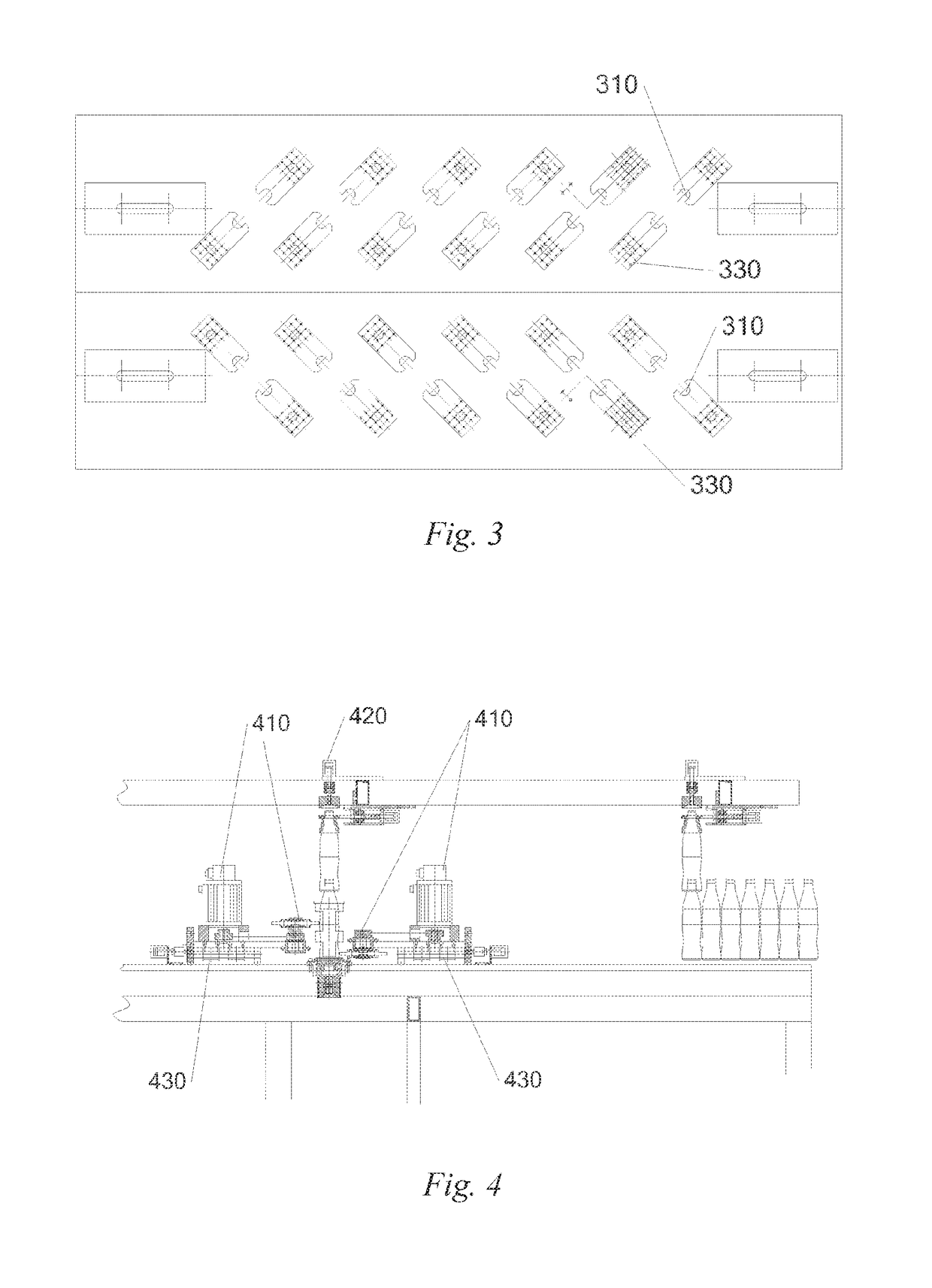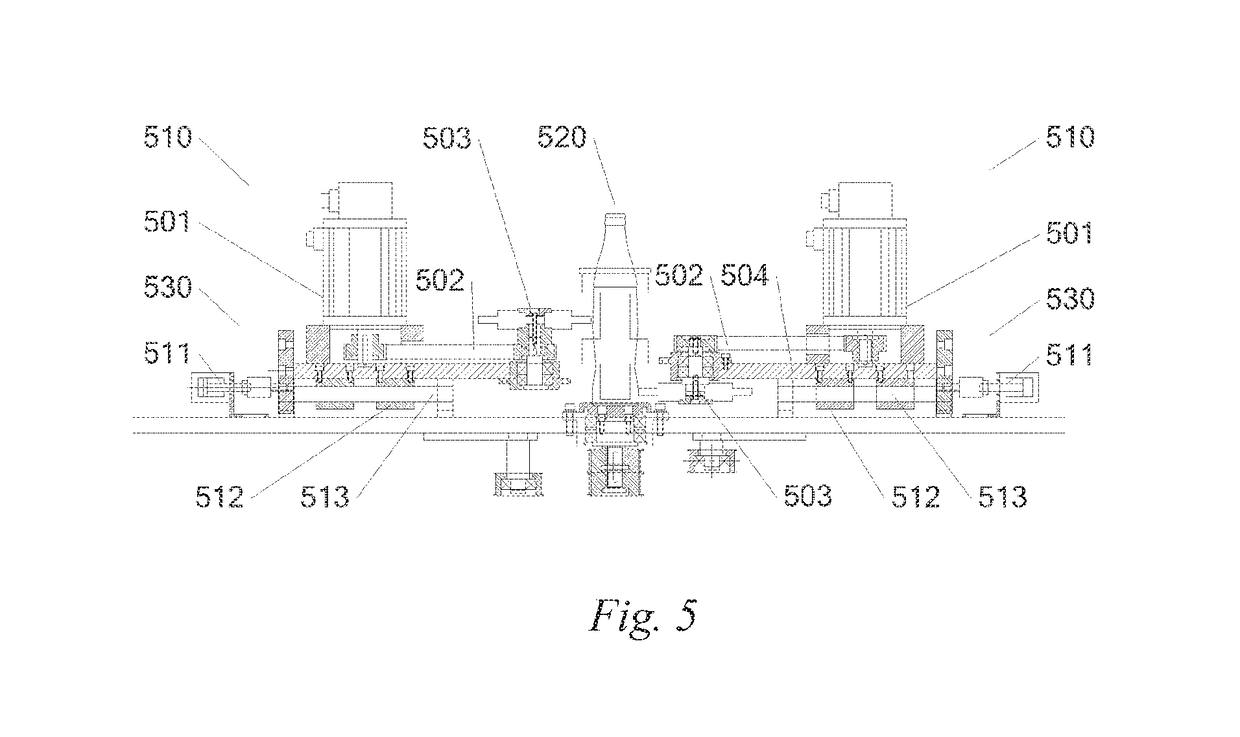Polishing process and polishing apparatus for glass product
a technology for polishing glass products and glass bottles, which is applied in the direction of grinding drives, flexible parts wheels, manufacturing tools, etc., can solve the problems of consumers abandoning the purchase of products, wear marks on contact rings, and forming wear rings, so as to increase the consumer's impression of the brand, high-quality polishing, and maximum retention of original structure and glass bottle thickness.
- Summary
- Abstract
- Description
- Claims
- Application Information
AI Technical Summary
Benefits of technology
Problems solved by technology
Method used
Image
Examples
example 1
[0048]By means of flexible flap grinding wheels using commercially available epoxy resin binder silicon carbide sandpapers of respective models of #80, #320 and #800 as flexible flaps, glass bottles are ground and polished with different contact forces using the polishing process according to the present invention, and the resulting grinding results are as shown in following table.
GrainContactGrindingAbrasivesizePorosityforceeffectFlap service lifeSilicon #80Low6 kgfGoodThe flap can be usedcarbidecontinuously for a longtimeSilicon#320High2 kgfPoorThe service life of thecarbideflap is shortSilicon#800Low4 kgfGoodThe flap can be usedcarbidecontinuously for a longtime
[0049]It can be seen that a silicon carbide abrasive with an epoxy resin as the main binder can be used for polishing glass articles. Polishing a glass article by selecting an appropriate contact grinding force and using flaps with an abrasive layer having a low porosity can result in a good grinding polishing effect, and ...
example 2
[0050]The process for polishing a glass article according to the present invention will be specifically described with reference to Example 2 below. The glass article is sequentially polished using six flexible flap grinding wheels of different abrasive grain sizes. In this example, the diameter of the hub of each flexible flap grinding wheel is 150 mm, the ratio of the length of the flaps to the diameter of the hub is 1:6, and the length of the flaps is 25 mm. The widths of the first to sixth flaps are respectively 8 mm, 10 mm, 12 mm, 15 mm, 18 mm and 19 mm, and the substrate material of the flexible flaps is a fabric. The flaps of the first to fifth grinding wheels are flexible flaps in which the abrasives in the abrasive layers are silicon carbide and the grain sizes are respectively, for example, about 300 μm, about 200 μm, about 160 μm, about 155 μm, and about 50 μm. The abrasive of the flaps of the sixth grinding wheel is cerium oxide, and the grain size is about 1 μm. By usin...
PUM
| Property | Measurement | Unit |
|---|---|---|
| abrasive grain size | aaaaa | aaaaa |
| grain sizes | aaaaa | aaaaa |
| force | aaaaa | aaaaa |
Abstract
Description
Claims
Application Information
 Login to View More
Login to View More - R&D
- Intellectual Property
- Life Sciences
- Materials
- Tech Scout
- Unparalleled Data Quality
- Higher Quality Content
- 60% Fewer Hallucinations
Browse by: Latest US Patents, China's latest patents, Technical Efficacy Thesaurus, Application Domain, Technology Topic, Popular Technical Reports.
© 2025 PatSnap. All rights reserved.Legal|Privacy policy|Modern Slavery Act Transparency Statement|Sitemap|About US| Contact US: help@patsnap.com



